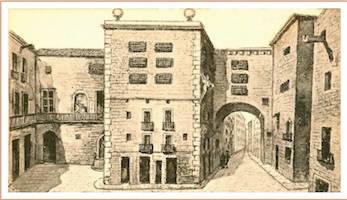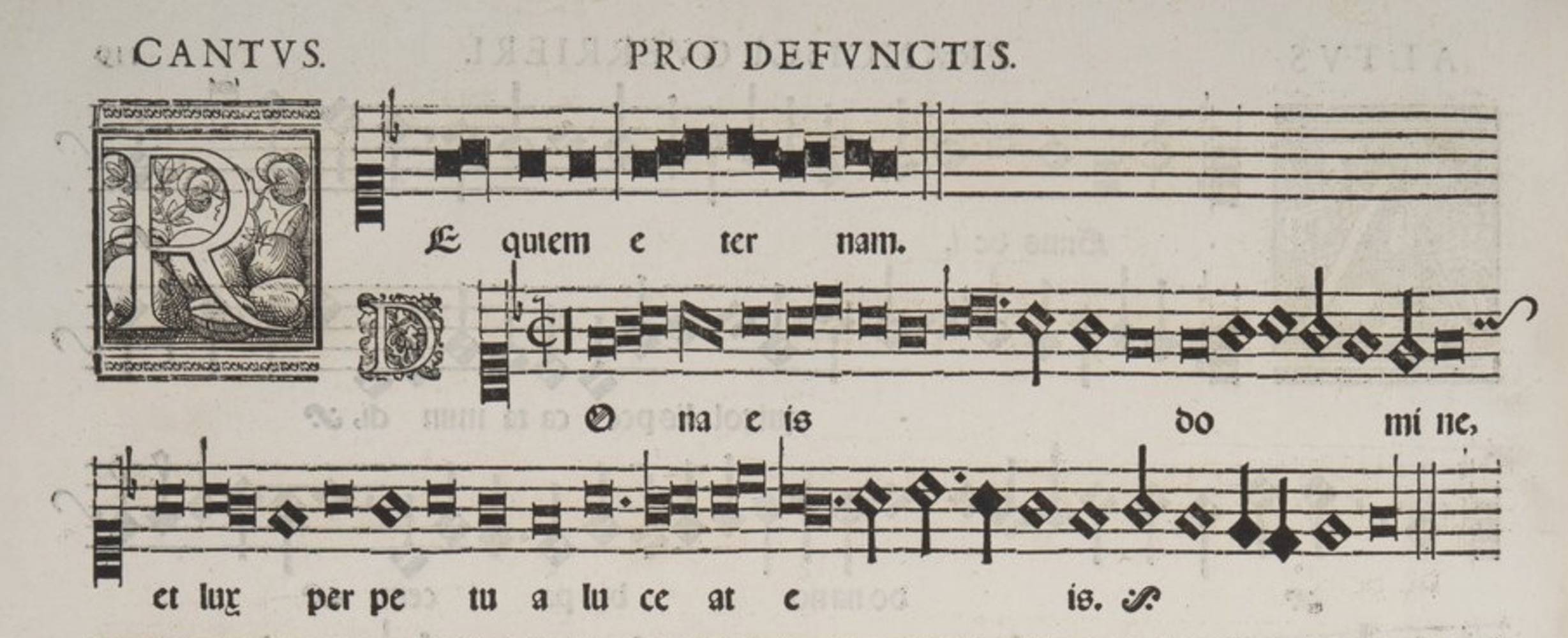Guerrero en la catedral de Barcelona
Knighton,
Tess
ICREA
0000-0002-8529-9376
Resumen
Los libros de polifonía aparecen esporádicamente en los legados testamentarios del siglo XVI. En este evento se da cuenta de un libro de coro de Francisco Guerrero donado a la sacristía de la catedral de Barcelona por el maestro de capilla Joan Burgonyó en el codicilo de su testamento, fechado en 26 de abril de 1581. Dejaba también otros libros de música (no especificados en el citado codicilo) a su sobrino Andreu Vilanova, el cual le sucedería como maestro de capilla de la catedral, por lo que no aparecen en el inventario de sus bienes, redactado en 1 de julio de 1589. Se han podido identificar dos libros impresos de polifonía que probablemente formaron parte del legado de Burgonyó.
Palabras clave
cartografiando Francisco Guerrero , misa (género musical) , obras impresas de Francisco Guerrero , inventario de libros de música , Francisco Guerrero. Missarum liber secundus (1582) [G 4872] , monacordio (= clavicordio) , Motteti de la Corona (1526-7) , Francisco Guerrero (compositor, maestro de capilla) , Andreu Vilanova , Jaume Ángel Tàpies , Joan Pujol , Joan Burgonyó
In a codicil to his will dated 26 April 1581, the chapelmaster (mestre de cant) of Barcelona Cathedral, Joan Burgonyó, who in his will of 8 April 1581 had named God as his universal heir, bequeathed his music books to his assistant and successor, Andreu Vilanova:
‘First, I leave and bequeath to the venerable mossen Andreu Vilanova, my nephew, all the music books I have and will have at the time of my death, except a large-format book which is called Guerrero which I leave to the sacristry of Barcelona Cathedral so that it can be used.’
‘Primerament dexo y lleg al venerable mo Andreu Vilanova cosin germa meu tots los libres que tinch y tindre al dia del meu obit que sien de musica exceptat vn llibre gran que s diu guerrero del qual fas llegat a la sacristia de la seu de Barcelona per que s seruesquen dell.’
[AHPB 437/80]
Vilanova, a beneficed priest in the cathedral, was one of the executors of his uncle’s will, together with a cathedral canon, another beneficed priest, a nobleman and Burgonyó’s son-in-law, a merchant from Santa Coloma de Queralt (Tarragona). The will confirms Burgonyó’s connection with this village: his father, Antoni Burgonyó, was a shoemaker there. Josep Maria Gregori, in his study of the chapelmasters of Barcelona Cathedral, previously suggested that possibly Burgonyó hailed from Vich and, while it was clear that in 1589 Vilanova succeeded his uncle as chapelmaster, their family relationship was previously unknown. Burgonyó was appointed chapelmaster in 1534 and served until his death fifty-five years later. His nephew substituted him for a year in 1551-2 and became his assistant in 1584 relieving him of the duties of looking after the choirboys.
At Vilanova’s appointment in September 1584, the chapter recognised his new position, but continued to support his uncle who had served the cathedral for so long:
‘… that he [Vilanova] should serve the position with the insignia of chapelmaster, that is, with a purple and black leather hood and with a salary of 20 lliures, and it needs to be seen where this money will come from so that nothing is taken from the chapelmaster [Borgonyó]; rather they should count him present for matins and everything else, and the assistant should have the choirboys with the salary of 100 lliures previously given to the chapelmaster, ensuring that mossen Andreu attend with the chapelmaster and serve as best he can, and that he does not neglect the boys and also that he [live] near the cathedral.’
‘… que servesque dit carrec ab insignes de mestre, ço es almuça morada y pells negres y ab salari de 20ll estes qu’es procura de mirar de hont han de exir ab tal que no’s lleve res al mestre ans be lo fassen present ha matines y ha tot lo demes y que lo ajunt que tingue los minyons ab lo salari de 100ll que se donen al mestre procurant de fer ab dit mossen Andre que se’n vingue ha estar ab lo mestre perque servesque en lo que pugue y no enyora los minyons y tambe per estar prop de la yglesia.’
[ACB, Llibre de la Sivella, 1501-1624, f.140; cited in Gregori 1984: 56-7.]
Apart from the bequest of music books, Borgonyó’s will is conventional: he specifies burial in the cathedral in the tomb dedicated to beneficed priests and that the funeral service should be solemn (de capitol); his executors should spend up to 10 lliures in Masses to be celebrated in the cathedral, and another 10ll for their celebration in the parish church of Santa Coloma de Queralt; and he leaves bequests of 50ll to each of his two nieces, and a year’s salary of 7ll to his maidservant Isabel. He asks his executors to draw up an inventory of his possessions which are to be sold to cover his debts and bequests, including the various pious acts. This inventory is dated Saturday 1 July 1589, two days after his burial [AHPB 437/83].
Burgonyó is recorded as having died in the house he owned on ‘la davallada de Santa Eulalia’. The house had at least seven rooms, including the kitchen (where the boy (fadri) slept), and a garden. He owned two canvas paintings – the Nativity and the Garden of Gethsemene – and two old tapestries, but his possessions were fairly modest. There were a number of walnut chests filled with documents and papers, but his music books are not listed since they formed his bequest to Vilanova. In a small chamber (recambra) leading off the room where he died, a clavichord (manacort) was found, an instrument commonly owned by priests. This is not mentioned in the record of the auction (encant) of Burgonyó’s possessions which took place almost week later on 7 July 1589; the tapestries sold for 5 lliures.
These documents afford a fascinating glimpse into the life of the Barcelona chapelmaster, his duties and his relationships. Still more intriguing, is what happened to his choirbook of music by Guerrero. Inventories drawn up at the cathedral in the early part of the seventeenth century following the death of successive chapelmasters include a choirbook of Guerrero’s Masses:
1613 (after the death of Jaume Ángel Tàpies; Anglés 1926: vii-viii)
‘Item another large-format book of paper, printed, of the Masses of Francisco Guerrero with cardboard covers covered in leather.’
‘Item altre libre de paper de forma major stampat de missas de Francisco Guerrero ab cubertes de cartró cubertes de cuyro.’
1626 (after the death of Joan Pujol; Anglés 1926: ix-xi):
‘Item a large-format volume with old cardboard covers, a little worn, entitled
Missarum Francisci Guerreri in alma ecclesia hispalensi printed in Rome.’
‘Item un tomo de forma mayor ab cubertes de cartro vellas y vn poch maltractat, intitulat Missarum Francisci Guerrery in alma ecclesia hispalensi stampat en Roma.’
Andrea Puentes has suggested that the choirbook indicated by these entries can probably be identified with the copy of Guerrero’s Missarum liber secundus (Rome: Domenico Basa, colophon Francesco Zanetti,1582) [RISM 4872], the only sixteenth-century printed music book to survive in Barcelona Cathedral archive (E-Bc cantoral 53). It now seems possible that this was the choirbook that Burgonyó left to the sacristy when he drew up his will in 1581. Burgonyó’s ownership of polyphonic books is confirmed by a sixteenth-century inscription in the Tenor partbook containing the four volumes of the Motetti de la Corona (Rome: Pasoti and Dorico, 1526-7) which reads: ‘Aquest libre es del senyor Joan Borgonyo’. The Alto, Tenor and Bass partbooks of the set, which have tooled leather covers, survive in the Biblioteca de Catalunya (E-Bbc M5-7). This is most likely one of the music books inherited by Burgonyó’s nephew Andreu Vilanova which subsequently passed to the cathedral.

